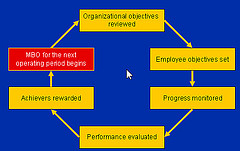Browse by Tag
- "Real" Innovation (2)
- Alignment (6)
- Business Innovation (9)
- Business Plan (2)
- Business Plans (1)
- Creativity (24)
- Critical Success Factors (4)
- Entrepreneurship (9)
- Global Competiveness (4)
- Human Side (11)
- India (1)
- Innovation (4)
- Innovation Consulting (18)
- Innovation Killers (3)
- Innovation Management (18)
- Innovation Tools (17)
- Innovation Training (24)
- Innovations (7)
- Inventions (16)
- IT Innovation (1)
- Leaders (5)
- Leadership (20)
- Leadership Development (13)
- Organizational Leadership (2)
- Organizational Strategy (20)
- Personal Values (6)
- Prediction (5)
- Strategic Innovation (38)
- strategic planning process (4)
- Strategy (3)
- Training (1)
- Vision (5)
- Weekly Dose (8)
Posts by Month
- 2014
- 2013
- 2012
- 2011
- 2010
- 2009
- 2008
- 2006
5 Important Innovation Change Questions
In our experience at the DeSai Group, when dealing with innovation as a major change initiative, employees seek answers to these five questions:
- What is happening with the innovation program?
- Why are we pursuing innovation as a major change?
- When is it going to happen?
- How will I be impacted during the rollout and after implementation?
- Where can I go with more questions, issues, and concerns related to the innovation program in my area?
What if we do not communicate to staff?
If these questions are not answered, you are leaving it to chance for employees to create their own interpretations, leading to possible negative consequences and waste of your valuable resources.

Communication Plan Template
Your high-level communication plan may include these points:
- Develop answers to the five questions. Then make sure the questions are addressed in every innovation initiative communication document, meeting, and webcast.
- Develop a one-minute message--your elevator pitch about the innovation program. It should describe the business case and vision for the future.
- Demand consistent dialog at all levels, especially middle management.
- Use multiple media to teach and tell--remove uncertainties and doubt from day 1.
- Clearly identify the objective of each communication: awareness building, skill development, network development, employee engagement, and so on.
- Check often for alignment of process objectives and productivity for the parties in the communication activity.
- Be open to examine and test for what people hear.
- Actively respond to feedback and make adjustments to the plan as required.
Communication, Communication, Communication
Don't underestimate the need to repeat the messages even when you know everyone has heard them time and again. Even with your best efforts, there are always many who will not understand the importance of the innovation change initiative.
There have been stories where after six months of implementation activities, senior executives have publicly asked, "Why are we doing all this innovation stuff?". Although this raised a few eyebrows, the question was taken seriously and led to rather thorough discussions of the whys that had not surfaced before.
The Takeaway
Innovation is about approaching products and processes in a different way. The communications surrounding the innovation effort require different methods as well.
Over to you. Please comment below.
- How do you disseminate information about your innovation change program?
- What else would you add to the communications plan template?
- What other questions do you find that employees tend to ask?
Strategic Acquisitions - Telecommunications Case Study
Everything is connected to everything. Everything is moving from large, to small, to micro, to nano. That means computing power in the palm of our hands and soon in our blood cells.
In order to turn data into information and knowledge, we need telecommunications. As an example, one of the largest growing fields is the convergence of 2-D data and entertainment. The convergence requires much larger and more efficient communication pipelines. Not everyone needs the same pipeline of services. Therefore, the Telecommunications industry must respond with customized communication services for any rich-media object. That means, for anyone in the world, at anytime, all the time, in any direction.

Client Situation
Let's take a look at a US Based, Telecommunications company with 9,000 employees, operating in 34 states plus one international operation.
They sought DeSai's help to develop new service offerings. Organic growth was their focus although they were open to acquisitions that would bring capabilities the company sought for wireless communications. The company asked DeSai to validate the targets before it spent hundreds of millions of dollars on the acquisitions.
DeSai Approach
The DeSai team dug deep into what jobs customers were really trying to get done in the target market by conducting interviews, implementing surveys and performing observational research.
The work resulted in the conclusion that customers were seeking to accomplish a set of jobs involving much different performance dimensions than what the client had originally envisioned.
DeSai Recommendation
DeSai recommended acquiring the capabilities to address the jobs from one of several struggling (and inexpensive) firms, rather than the high-priced acquisition target the firm was considering. Why? Because of the different capabilities identified during the vetting process.
Results Are The Measure of Innovation Success
How did applying the DeSai Body of Knowledge impact the company?
- DeSai's recommendation saved the telecom client millions of dollars in acquisition costs while showing the company an inexpensive route to acquire the capabilities it really needed to address the right customer jobs-to-be-done.
- Client achieved 22% top-line growth in first three years.
- 15% net contribution to the bottom line during the first three years resulting from the innovation program/process.
The Takeaway
Change your innovation culture to allow validation of key assumptions before committing large amounts of resources to a project.
Your Turn. Please comment below.
- What is your system of checks and balances for vetting possible acquisitions?
- How is convergence impacting your business opportunities?
- Do you prefer organic growth or acquisitions to increase the size of your business?
How to Define Innovation Objectives and Innovation Goal
To help facilitate a strong leadership conversation about innovation objectives and innovation goals, here are some examples of why you might choose to enable an innovation engine for your organization:
- To differentiate your organization in the marketplace
- To build customer loyalty
- To identify savings potential
- To achieve revenue potential
- To accelerate exploitation of new business ideas worthy of pursuing
- To a build climate and culture of innovation as per the organization's innovation mission
- To become a leading innovation brand for products and services in the markets served and new markets you may serve
- To improve and expand current products and services
- To access new technologies
- To access new markets
- To identify market trends
- To improve product quality and associated core processes
- To improve employee attraction, engagement, and retention
- To develop new competencies

Defining the Innovation Goal
The innovation goal should be visionary and exciting. It should be something that has not seen before, measurable at least once per year (eventually more often), customer focused, and ultimately delivering value (top line, mid line and bottom line).
Following are some examples of innovation goals:
- Increase the product pipeline from x to y, to grow the top line by 5% better than your sector's GDP.
- Annually achieve 25% additional margin from new customer-driven services.
- Increase the top line every three years by 25%.
- Double the top line and bottom line every three years.
- Achieve 25% of the top line from new services created within the past 24 months.
- Develop new customer-driven products from the top ten customers that will increase net margins by 5% every year.
- Build a new S-Curve: Invent a completely new business with a new category of offerings.
- Improve customer acquisition ratio by 15% every year for the next three years.
- Achieve a customer satisfaction index (CSAT) (or some other best practices method such as net promoter score (NPS) score of 6.0 out of 7.0 (85% or better).
- Achieve 25% net profit from 3 new businesses and 25 new current product enhancements in the next five years.
- 1% profit before income tax (PBIT) above the current PBIT targets.
- Top customers rate us as most innovative in markets and categories we serve.
- 2x/3y: Grow 2x every three years, both top line and bottom line.
- 3/30/3: Within three years achieve a rate of 30% new revenue from products/services introduced in last three years.
- 20/20: 20% of new business (top line) should come from 20% of new customers every year.
- 10/20/30: Ten new offerings that yield 20% growth in revenue and 30% growth in profitability.
- 50% of all products should be engineered or should include technologies from outside the firm by 2020.
These are good examples of innovation goals to consider. Use the list to engage senior leaders in dialog, debate, and consensus. Then, define innovation goals for your company and for each business unit.
If your innovation initiative is for the entire enterprise, one goal should be directly linked to the business strategy.
If you are rolling out innovation only in your own business unit or information technology department, the goal should be aligned to the area's business or operational strategy.
Whatever you choose as your innovation goal, it should be fixed for a minimum of three years. At the end of three years, you can always enhance it or pick an alternative.
The Takeaway
To communicate the innovation agenda to your organization you must first clearly define the innovation strategy, objectives and goals.
Over to you. Please comment below.
- How do you plan to motivate your company's employees to generate innovative ideas and products?
- What is your goal for company innovations in the next 12 months?
- What other items would you add to the above lists?
22 Principles of Innovation
Based on the last 25 years of working with local and global firms, The DeSai Group we has identified a22 Principles of Innovation. We have divided them into three categories: Organizational Success Principles, Individual and Team Success Principles and Leadership Success Principles.
When embraced, these principles create a significant difference when searching for innovations or venturing for new businesses. These principles are industry agnostic. Based on your industry, company culture, and business context, some may have more importance than others. They are all crucial in a great program design. You will need to uphold these as truths and make sure they take deep roots from day 1.

Organizational Success Principles
1. Seek innovation to alter or identify new business models. Due to the abundant number of convergences in products and industries, there is more white space today (in every sector) than ever before. Old business models are dying fast. Challenge your current business model, and perform acts of creative destruction. Work from the future back.
2. Listen for 360-degree voices. Your customers and partners are communicating their unmet needs faster and through a variety of media. Learn to listen faster. The voice of the customer alone is no longer enough. You must empathize with customers and gain new insights for their emerging and unmet needs.
3. Develop an innovation charter that defines innovation for your business. Tell everyone why it is important and what is expected of each individual at all levels as behaviors of innovation. Allow everyone to see themselves in your innovation vision.
4. Focus on developing microclimates for innovation, not the culture of innovation. This means you must find ways to make teams innovative. As more teams become innovative, culture will take care of itself.
5. Integrate innovation behaviors into your human resources performance management process.
6. C-suite and senior leaders should role-model innovation behaviors expected of others.
7. Provide basic innovation education to as many people as possible, and provide extended training to help build intrapreneurs. A good target ratio is 1% to 2% (develop 50 intrapreneurs if you have 5,000 non-factory employees).
8. Focus on fast experiments. Develop 90-day experiment plans for ideas that come from teams across the organization. Some of these ideas will surely drive powerful outcomes for your customers.
9. Define stretch challenges with a vivid vision of a future that is believable. Bigger challenges bring the best innovators forward. Real intrapreneurs are those who need stretch challenges and the freedom to test their wacky ideas-that is their currency. Liberate them to fail fast and discover ways to serve your customers. Give them candid feedback and recognize them quickly, no matter what the outcome for an experiment or a pilot. When they produce results, reward them handsomely.
10. In the beginning, provide access to off-budget funds for those who can work on challenging problems and produce fresh new solutions for growth.
11. Manage the idea bank closely-the bigger the pipeline (quantity and quality), the better the future.
Individual and Team Success Principles
12. Promote cross-functional volunteerism. Research shows that the majority of your employees bring only a portion of themselves to work. This means there is unharvested organizational potential waiting to be leashed. Allow anyone to form cross-functional teams for their great ideas. Diversity of thought is the catalyst for ideas. What any one person sees is only apart of what needs to be seen.
13. Teach people how to make what is invisible visible. No one person can see the future as clearly as a team of intrapreneurs can. Humans can see only through a lens of their past experiences. This means they never see a full reality of a situation. This thought can be humbling and, at the same time, very energizing for your best talent.
14. Learn to ask new questions before generating new ideas. Most organizations are solving the wrong problems in today's fast-paced world.
15. Prototype fast-think design on day 1. Always promote action over analysis. Sitting in the corner office idealizing issues and solutions is less effective than two people role-playing the situation for new insights.
16. Diverge then converge. Then do it again. Then do it once more. Three cycles will improve the clarity of an idea as it moves along the innovation pipeline. The very best ideas will survive.
17. Greenhouse ideas. At the very early stages, ideas must be protected just like a seed has to be protected for a plant to grow. Never dismiss an idea. Put them all in a greenhouse and protect them so they don't get shot down. Keep playing with them. It might take a few weeks or months before they are ready to be shared.
Leadership Success Principles
18. Show everyone how to derisk the future. Taking no risk can lead to stagnation. Not taking enough risk can create commoditization and price wars. Taking just enough risk at the right time can lead to market differentiation; that is called derisking the future.
19. Create healthy discontent. Provide stretch challenges and demand breakthrough solutions-once in a while. Most work is incremental. Your best innovators get bored easily. Often they are most sought after for all incremental challenges. Manage their intellectual capital between easy and complex assignments. This will keep them engaged and at peak levels of performance.
20. Communicate how innovation decisions will be made. Create an environment of transparency for idea generation, evaluation protocol, funding and experimentation.
21. Implement a reward and recognition policy that encourages proper behaviors for all, especially middle management.
22. Exhibit personal passion for innovative thinking and creativity.
The Takeaway
Innovation is a large opportunity in all organizations. However, it requires persistence, a plan and engaged employees to succeed.
Your turn. Please comment below.
1. What other innovation principles would you add to the list?
2. Which category do you feel is more important than the other two categories?
3. Do you find these principles to be industry agnostic?

